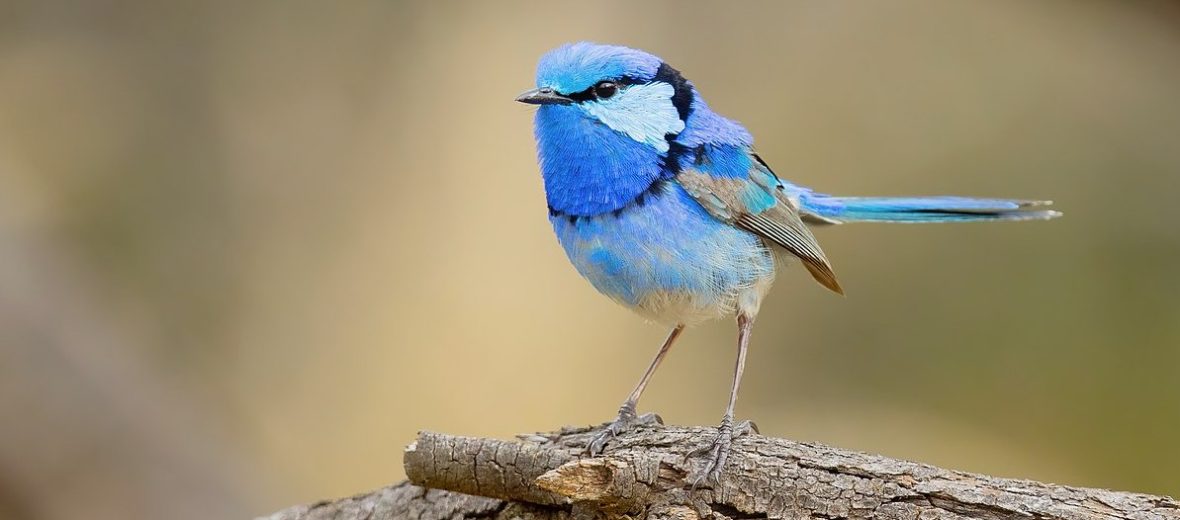
The splendid fairywren, aka blue wren or splendid wren, hails from Australia. Inhabiting primarily arid and semi-arid regions, they can be found dwelling in acacia woodlands, dry forests, savannahs, shrublands, and mallee eucalypt with thick shrubs. With an abundant and stable population and no real threats, sans habitat loss and invasive species, these birds are listed as Least Concern by the IUCN.
First the Stats…
Scientific name: Malurus splendens
Weight: Up to .4 ounce
Length: Up to 5.5 inches
Wingspan: Up to 14 inches
Lifespan: Up to 6 years
Now on to the Facts!
1.) These birds tend to sing while foraging for food.
2.) Splendid fairywrens are diurnal (active during the day).
3.) During the summer months, they will often rest during the hottest part of the day. But during winter, they will forage throughout the entire day.
4.) Fairywrens dwell in groups of up to 8 individuals.
5.) A group of fairywrens is called a chime or herd.
But wait, there’s more on the splendid fairywren!
6.) Intruders are often met with a threat posture and vocalizations.
7.) These birds are both socially monogamous and sexually promiscuous. This means that while the male will pair up with a female partner, he will also breed with other females in the area and even tend to rearing other’s young.
Did you know…?
Rodent-run displays are often performed to distract nest marauders. This involves lowering the head, neck, and tail and then they will hold out their wings, fluff their feathers, and sound an alarm call.
8.) A part of their courtship involves offering pink and purple flower petals to the females as an offering to entice them into breeding with him.
9.) They are primarily insectivores (eat insects) that prey on ants, various bugs, crickets, grasshoppers, spiders, and more. These birds will also feast on flowers, fruit, and seeds.
10.) Females lay up to 4 eggs that hatch in up to 15 days.
But wait, there’s still more on the splendid fairywren!
11.) Chicks are independent in up to 13 days.
12.) Their main predators are Australian magpies, butcherbirds, crows, laughing kookaburra, ravens, shrike-thrushes as well as mammals like cats, red foxes, and black rats.
Did you know…?
These birds are not known to be too scared of humans and will gladly feed from tables and feeders. Their favorite food is cheese.
13.) The parents will often feed grasshoppers and caterpillars to their nestlings.
14.) Termed hop-searching, these birds will tend to forage on the ground and in shrubs that are just 6+ feet tall.
15.) They build such a small nest that the female’s tail is often bent during incubation.
Now a Short Splendid Fairywren Video!
Be sure to share & comment below! Also, check out the Critter Science YouTube channel. Videos added regularly!
Want to suggest a critter for me to write about? Let me know here.
Photo credit” JJ Harrison



